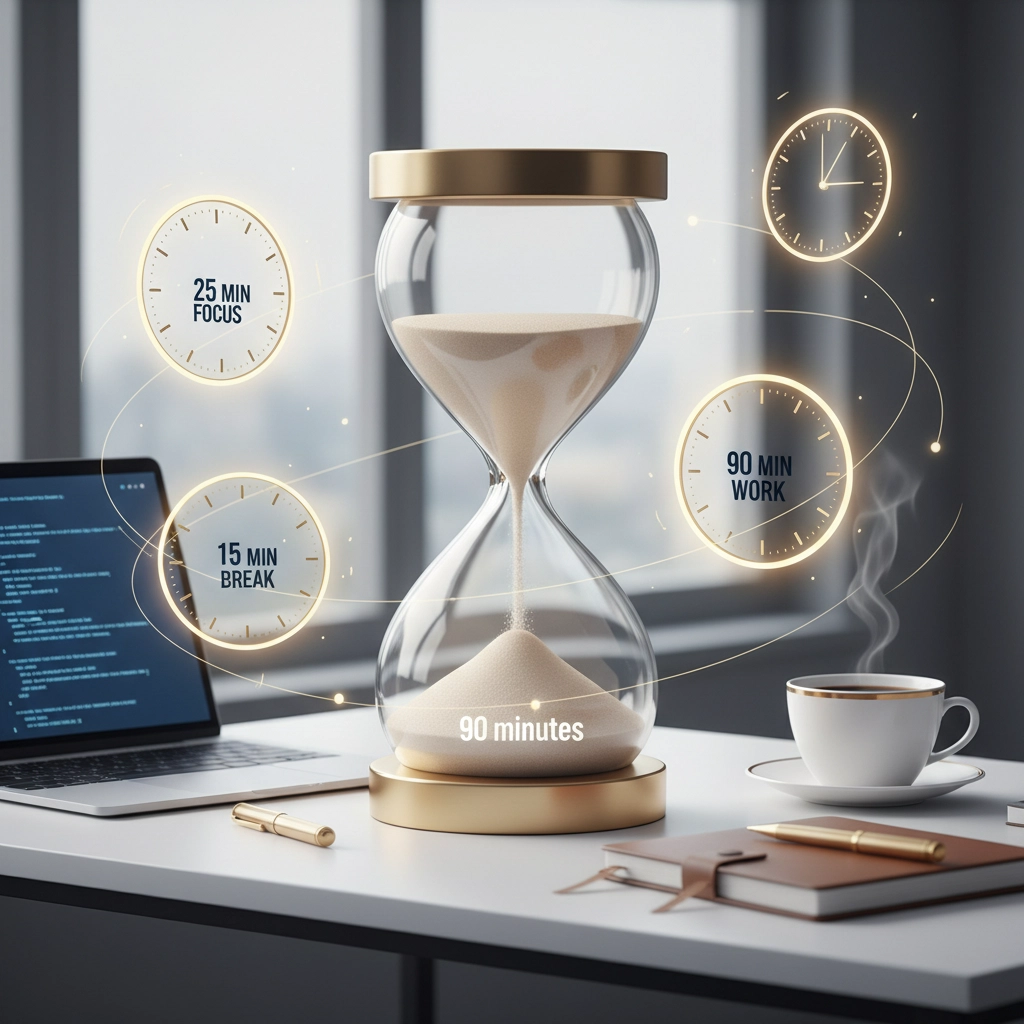Let's be honest, if you're an executive reading this, you're probably exhausted. You're crushing your goals, hitting your numbers, and leading your team like a champion. But you're also running on fumes, and deep down, you know this pace isn't sustainable.
Here's the reality check: 76% of executives are showing burnout symptoms right now. That's not a badge of honor, it's a warning sign that our approach to leadership success is fundamentally broken.
The good news? You don't have to choose between peak performance and personal well-being. Sustainable success isn't just possible, it's actually more profitable and effective than the burnout-driven approach most leaders default to.
Why Most Executives Get This Wrong
Most leaders treat their energy like it's infinite. They pile on more meetings, say yes to every opportunity, and push through exhaustion like it's a virtue. But energy isn't unlimited, and treating it like it is will eventually catch up with you.
The executives who consistently perform at their best understand something crucial: energy management beats time management every single time. You can optimize your calendar all you want, but if you're running on empty, those perfectly scheduled hours won't deliver results.

The Four-Pillar Energy Management System
Think of your energy like a smartphone battery. You wouldn't expect your phone to run at 100% capacity while never charging it, right? Yet that's exactly what most executives do with themselves.
Physical Energy is your foundation. This isn't about becoming a fitness fanatic: it's about the basics that fuel your performance. Quality sleep (7-9 hours consistently), nutrition that stabilizes your energy throughout the day, and movement that keeps your body functioning optimally. When your physical energy is solid, everything else gets easier.
Mental Energy is your cognitive capacity. Your brain can only handle so much decision-making before it starts making poor choices. This is why successful executives batch similar tasks, automate routine decisions, and protect their mental energy for the big stuff that actually moves the needle.
Emotional Energy is about managing your internal state. Stress, frustration, and overwhelm don't just feel bad: they literally drain your capacity to lead effectively. Learning to regulate your emotions and recover from setbacks isn't soft skills: it's essential leadership infrastructure.
Spiritual Energy connects you to your deeper purpose. When you're clear on why your work matters beyond just hitting targets, you tap into a sustainable source of motivation that can carry you through the inevitable challenges of leadership.
The 90-Minute Rule That Changes Everything
Here's a game-changer that most executives miss: your brain can only maintain peak focus for about 90 minutes before it needs a real break. After that, you're just going through the motions while your decision-making quality plummets.
Instead of grinding through 8-hour days in a fog, try working in 90-minute focus blocks. During these blocks, eliminate all distractions: no emails, no notifications, no "quick questions" from your team. Just deep, focused work on your most important priorities.
Between blocks, take a real 10-15 minute break. Not checking emails or scrolling your phone: actual recovery. Walk outside, do some breathing exercises, or just sit quietly. This isn't wasted time; it's an investment in your next block's effectiveness.
Most executives who implement this system find they get more high-quality work done in 4-6 focused hours than they used to accomplish in full 10-hour days.

Stress Response Optimization
Let's talk about stress. It's not going away: leadership comes with pressure, difficult decisions, and high stakes. But how you respond to stress makes all the difference between sustainable success and inevitable burnout.
Prevention is your first line of defense. This means building practices that increase your stress tolerance before you need them. Regular meditation, even just 10 minutes a day, literally rewires your brain to handle pressure better. Physical exercise acts as a release valve for stress hormones. Having clear values and decision-making frameworks reduces the mental load of constantly figuring out what to do.
Intervention is what you do when stress hits in real-time. Develop go-to techniques for high-pressure moments: box breathing (4 counts in, hold for 4, out for 4, hold for 4), progressive muscle relaxation, or even just taking three deep breaths before responding to that frustrating email.
Recovery is what happens after stressful periods. You can't just power through and expect to maintain peak performance. After big projects, difficult quarters, or challenging decisions, you need intentional recovery time to reset and recharge.
Work-Life Integration (Not Balance)
Forget work-life balance: it's a myth that sets you up for failure. Instead, focus on work-life integration that aligns with your values and energy patterns.
This means being intentional about energy allocation across all areas of your life. Maybe you're a morning person who does your best strategic thinking before 9 AM: protect that time fiercely. Maybe you perform better after you've had quality time with your family: schedule that connection time like any other important meeting.
The key is designing a life that works with your natural rhythms rather than against them. Some weeks will be work-heavy, others will require more personal focus. The goal isn't perfect balance: it's sustainable integration over time.

Building Anti-Fragile Resilience
Resilience isn't just about bouncing back from challenges: it's about getting stronger through them. This is what psychologists call "anti-fragility," and it's a learnable skill that separates sustainable leaders from those who burn out.
Emotional intelligence is your foundation here. When you can recognize and regulate your own emotions while understanding and influencing others', you become much more effective at navigating the human dynamics that make leadership challenging.
Recovery rituals are non-negotiable. After major projects or difficult periods, take a week to wrap up loose ends, celebrate wins, and recharge. This isn't vacation: it's strategic recovery that prepares you for the next challenge.
Learning orientation transforms setbacks into growth opportunities. Instead of seeing failures as evidence that you're not cut out for leadership, view them as data points that make you better at your job.
Implementation: Your 90-Day Transformation Plan
Ready to make this real? Here's how to implement sustainable success practices over the next 90 days:
Days 1-30: Foundation Building
- Audit your current energy patterns across all four pillars
- Implement the 90-minute focus block system
- Establish basic recovery rituals (sleep schedule, movement routine)
- Set clear boundaries around your most important energy sources
Days 31-60: Optimization
- Refine your stress response toolkit
- Design your ideal weekly rhythm
- Build in proactive recovery periods
- Start measuring energy levels and performance quality
Days 61-90: Integration
- Fine-tune your systems based on what's working
- Teach these principles to your team
- Create accountability structures to maintain progress
- Plan for long-term sustainability
The Bottom Line
Sustainable success isn't about working less: it's about working smarter with the energy you have. When you treat your energy as the finite, valuable resource it is, you'll find you can achieve more meaningful results while actually enjoying the process.
The leaders who master this approach don't just avoid burnout: they create competitive advantages through their enhanced decision-making, emotional regulation, and long-term thinking. They build stronger teams because they model healthy leadership. And they create businesses that thrive because they're leading from a place of strength rather than exhaustion.
Your organization needs you at your best, not just at your busiest. It's time to stop glorifying exhaustion and start building the sustainable success systems that will serve you and your team for the long haul.
The question isn't whether you can afford to implement these changes( it's whether you can afford not to.)


